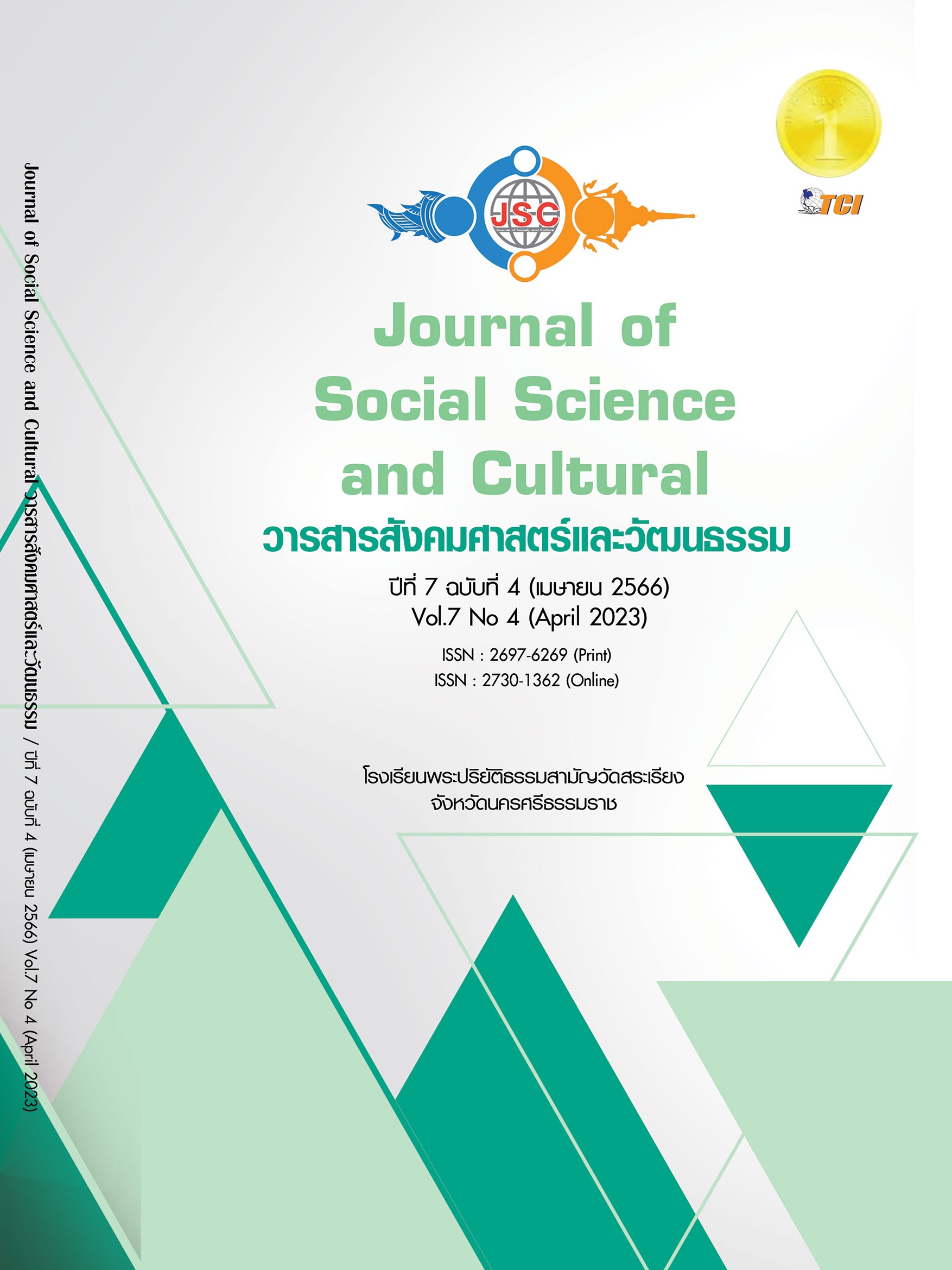HUMAN CAPITAL DEVELOPMENT IN THE DIGITAL AGE : A CASE STUDY OF RAMKHAMHAENG UNIVERSITY
Main Article Content
Abstract
The purposes of this research were: 1) to study the human capital development of Ramkhamhaeng University (RU) at present; to examine 2) to study the problems and obstacles in the human capital development of RU; and to propose 3) guidelines for an appropriate human capital development for RU in the digital age. The qualitative research technique was employed with the sample population of twenty- three key informants from RU using the purposive sampling method. The research instrument to collect data was a structured in-depth questionnaire. Data were collected from documents and in-depth interviews who were administrators and those involved with human capital development at RU. Data were collected from April 25 to June 2, 2022. Descriptive content analysis. Data were descriptively presented. Findings showed that RU administrators from the past to the present have paid attention continuously to personnel development. A variety of methods has been employed in personnel development in order to ensure that personnel development yields maximum benefits to the organization and each individual. Plans for RU personnel administration and development have been made. The problems and obstacles in overall human capital development of RU are in the aspects of budget, too strict regulations, personnel adjustment, equipment and programs related to online instruction and study, online performance, and public relations for training. Guidelines to solve problems and obstacles in human capital development for RU overall are as follows. In the aspect of equipment and support for instruction and study as well as online performance, a committee should be appointed for budget allocation. Public relations should be widespread. Motivation should be encouraged. Online training programs in the form of applications should be provided. Concerning appropriate guidelines for human capital development in the digital era, the topics to be trained and developed in various fields both onsite and online.
Article Details
References
กองแผนงาน,มหาวิทยาลัยรามคำแหง. (2560). รายงานประจำปี 2559 ของมหาวิทยาลัยรามคำแหง. กรุงเทพมหานคร: สำนักพิมพ์มหาวิทยาลัยรามคำแหง.
กองแผนงาน,มหาวิทยาลัยรามคำแหง. (2563). รายงานประจำปี 2562 ของมหาวิทยาลัยรามคำแหง. กรุงเทพมหานคร: สำนักพิมพ์มหาวิทยาลัยรามคำแหง.
กองแผนงาน,มหาวิทยาลัยรามคำแหง. (2564). รายงานประจำปี 2563 ของมหาวิทยาลัยรามคำแหง. กรุงเทพมหานคร: สำนักพิมพ์มหาวิทยาลัยรามคำแหง.
คณะกรรมการดำเนินการจัดทำหนังสือ 44 ปี มหาวิทยาลัยรามคำแหง. (2558). 44 ปีมหาวิทยาลัยรามคำแหง. กรุงเทพมหานคร: สำนักพิมพ์มหาวิทยาลัยรามคำแหง.
งามพิศ สัตย์สงวน. (2551). การวิจัยเชิงคุณภาพทางมานุษยวิทยา. กรุงเทพมหานคร: สำนักพิมพ์แห่งจุฬาลงกรณ์มหาวิทยาลัย.
ฉัตรสุมน พฤฒิภิญโญ. (2553). หลักการวิจัยทางสังคม. กรุงเทพมหานคร: เจริญดีมั่นคงการพิมพ์.
ชัชวาลย์ เจียรวนนท์. (2545). สังคมยุคดิจิทัล. เรียกใช้เมื่อ 16 เมษายน 2566 จาก http://www.thaitelecom.com:/ /News/Techfocus/Techfocus-Generate. pl?2545/01/1-09-39-000
นิสดารก์ เวชยานนท์. (2557). การบริหารทุนมนุษย์เชิงกลยุทธ์ของไทย. นนทบุรี: รัตนไตร.
สุจิตรา ธนานันท์. (2555). การพัฒนาทรัพยากรมนุษย์. (พิมพ์ครั้งที่7). กรุงเทพมหานคร: ห้างหุ้นส่วนจำกัดทีพีเอ็น เพรส.
Ashmond, B. et al. (2022). Human resource development practices and employees’ performance in a Ghanaian University: A case of the University of Cape Coast. Journal of Human Resource and Sustainability Studies, 10(1), 77-97.
Berg, B. L. (2001). Qualitative research method for the social science. New York : A Plarson - education company.
kaplan, R. S.& Norton, D. P. (2000). The Strategy Focused Organization: How Balanced Scorecard Companies thrive in the New Business Environment? Boston: Harvard Business School Press.
Rahmanto, F. & Pribadi, U. (2020). Factors human resource development public organization. Economics Development Analysis Journal, 9(3), 260-268.
Swart, J. et al. (2005). Human Resource Development: Strategy and Tactics. Oxford, England: Elsevier.


